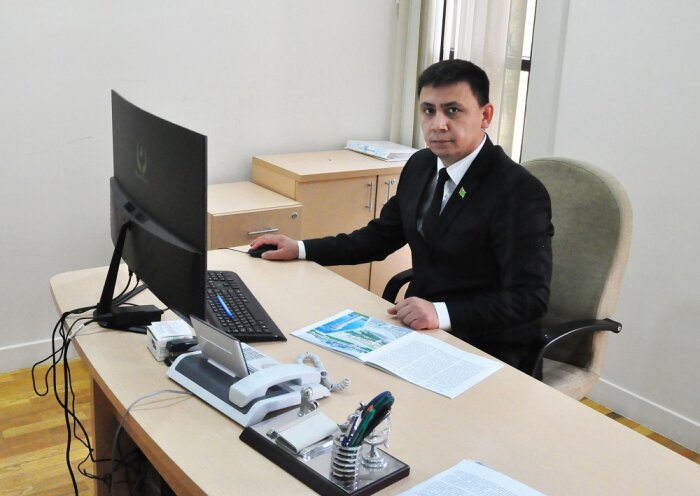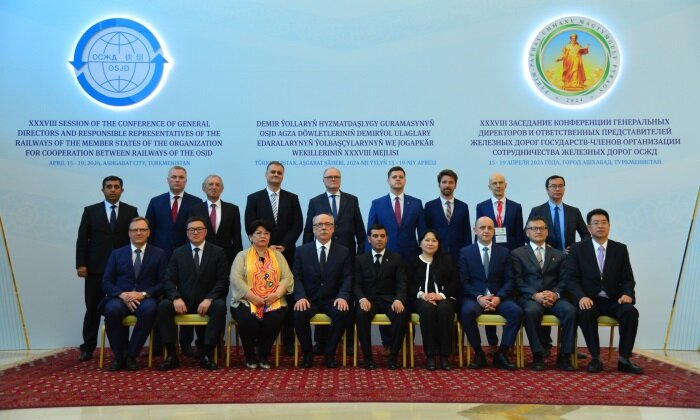 Turkmenistan is dynamically forging long-term ties with China, seeking to improve the quality of life and well-being of the peoples. The main areas include energy, transport and humanitarian cooperation.
Turkmenistan is dynamically forging long-term ties with China, seeking to improve the quality of life and well-being of the peoples. The main areas include energy, transport and humanitarian cooperation.
A senior lecturer at the Department of International Economic Relations of the Institute of International Relations of the Ministry of Foreign Affairs of Turkmenistan Perhat Charyev commented on the correlation and mutually integrated content of Turkmenistan’s Revival of the Silk Road Strategy and China’s One Belt, One Road Initiative for CentralAsia.news.
Equality and recognition of interests
The strategic concept of the One Belt, One Road Initiative implemented by the People’s Republic of China has received a positive response from the international community. The purpose of this initiative is to step up international trade, investment and environmental projects by using resources of the participating countries.
First international consultations on this project took place in May 2017, and second consultations were held in Beijing in April 2019. In October 2023, at the invitation of Chinese President Xi Jinping, National Leader of the Turkmen people, Chairman of Halk Maslahaty of Turkmenistan Gurbanguly Berdimuhamedov took part in the Third Belt and Road Forum for International Cooperation, which was held in the capital of China.
In his historic speech at the forum, he stated that Turkmenistan’s Revival of the Silk Road Strategy correlates with China’s One Belt, One Road Initiative.
«These strategies have given a powerful impetus to economic development of Eurasia, connecting spaces from the Pacific to the Atlantic Ocean in response to the demands of the modern times, creating interconnected industrial and technological stages and industrial belts, helping solve many vital problems, including the improvement of the standard of living and well-being of peoples,» Gurbanguly Berdimuhamedov emphasised.
The National Leader of the Turkmen people held bilateral talks with Chinese President Xi Jinping during his visit.
Foundation for economic development
The Agreement on technical and economic cooperation between the Government of Turkmenistan and the Government of the People’s Republic of China and the Memorandum of Understanding between the State Customs Service of Turkmenistan and the General Administration of Customs of the People’s Republic of China on cooperation in building up capacities of the Authorised Economic Operator Programme were signed on dialogue platforms in Beijing.
This document envisages fostering bilateral cooperation in optimising the network of Authorised Economic Operator through the exchange of expertise and experiences. The agreement will provide the parties with ample opportunities to conduct training courses and meetings to improve the skills of employees under the Authorised Economic Operator Programme.
This step will drive the practical implementation of additions to the Customs Code of Turkmenistan regarding the network of Authorised Economic Operators adopted on September 30, 2023, as well as bilateral trade and economic relations.
Untapping strategic potential
In accordance with the Revival of the Great Silk Road concept, a number of ambitious projects in the fuel and energy, transport and transit sectors have been implemented in the North-South and East-West directions.
This is vividly illustrated by the Joint Declaration on strategic partnership between Turkmenistan and the People’s Republic of China, signed in September 2013, which marked a new stage in interstate cooperation.
In January 2023, President of Turkmenistan Serdar Berdimuhamedov paid a state visit to the People’s Republic of China at the invitation of Chairman of the People’s Republic of China Xi Jinping. A number of bilateral documents were signed during this visit. These include the Memorandum of Understanding between the Government of Turkmenistan and the Government of the People’s Republic of China on the correlation between the international initiatives «Revival of the Silk Road» and «One Belt, One Road». This document enabled the two countries to expand mutually beneficial economic, trade and green tech cooperation.
The ongoing projects should be mentioned to illustrate the scale of interaction.
Transport corridors
In this area, the Kazakhstan-Turkmenistan-Iran railway opened a direct course for European countries from the ports of the Baltic Sea to the commodity markets of the Persian Gulf, the Middle East and India. Rail freight traffic along this route has been constant since 2016.
The total length of the railway is about 10,000 kilometres, and the average travel time is about 2 weeks. By rail it is twice as fast as by sea.
Furthermore, it is planned to increase rail freight traffic along the China-Kyrgyzstan-Uzbekistan-Turkmenistan route. The Caspian Pass is the shortest and most competitive trade fairway connecting the markets of Asia and Europe.
In 2019, the initiatives to create a multimodal transport corridor China-Kyrgyzstan-Uzbekistan-Turkmenistan-Azerbaijan-Georgia-Turkey from the Asia-Pacific region to Europe across Central Asia and the Caucasus were signed at the conference in Tashkent.
The project participants signed the Protocol of Transport Corridor Operators CASCA+ at the conference, which was held in Ashgabat in 2023.
Today, the Turkmenbashi Transport and Logistics Centre (TTLC) offers reliable freight transportation services from the «green» Turkmenbashi port to the sea harbours of China and Vietnam. The transit routes from Turkmenbashi through the Port to Aktau to Qingdao, Shanghai, Tianjin and Ho Chi Minh City will help business communities safely and promptly deliver their goods to the destinations.
Energy cooperation
Currently, the two friendly countries are implementing dozens of joint projects, including the Turkmenistan-Uzbekistan-Kazakhstan-China transnational gas pipeline, which is called the Giant Project of the 21st Century and is one of the main sources of natural gas exports from Turkmenistan.
The total supply capacity of the three branches (A, B, C) of the Turkmenistan-China gas pipeline reaches 55 billion cubic metres per year.
The parties are planning to build a new Line D along the Turkmenistan-Uzbekistan-Tajikistan-Kyrgyzstan-China route. This line will allow increasing the total supply of Turkmen natural gas to China to 65 billion cubic metres per year. Gas will be supplied from one of the world’s largest gas fields — Galkynysh.
Furthermore, Chinese businesses are participating in the construction projects of important industrial and social facilities.





